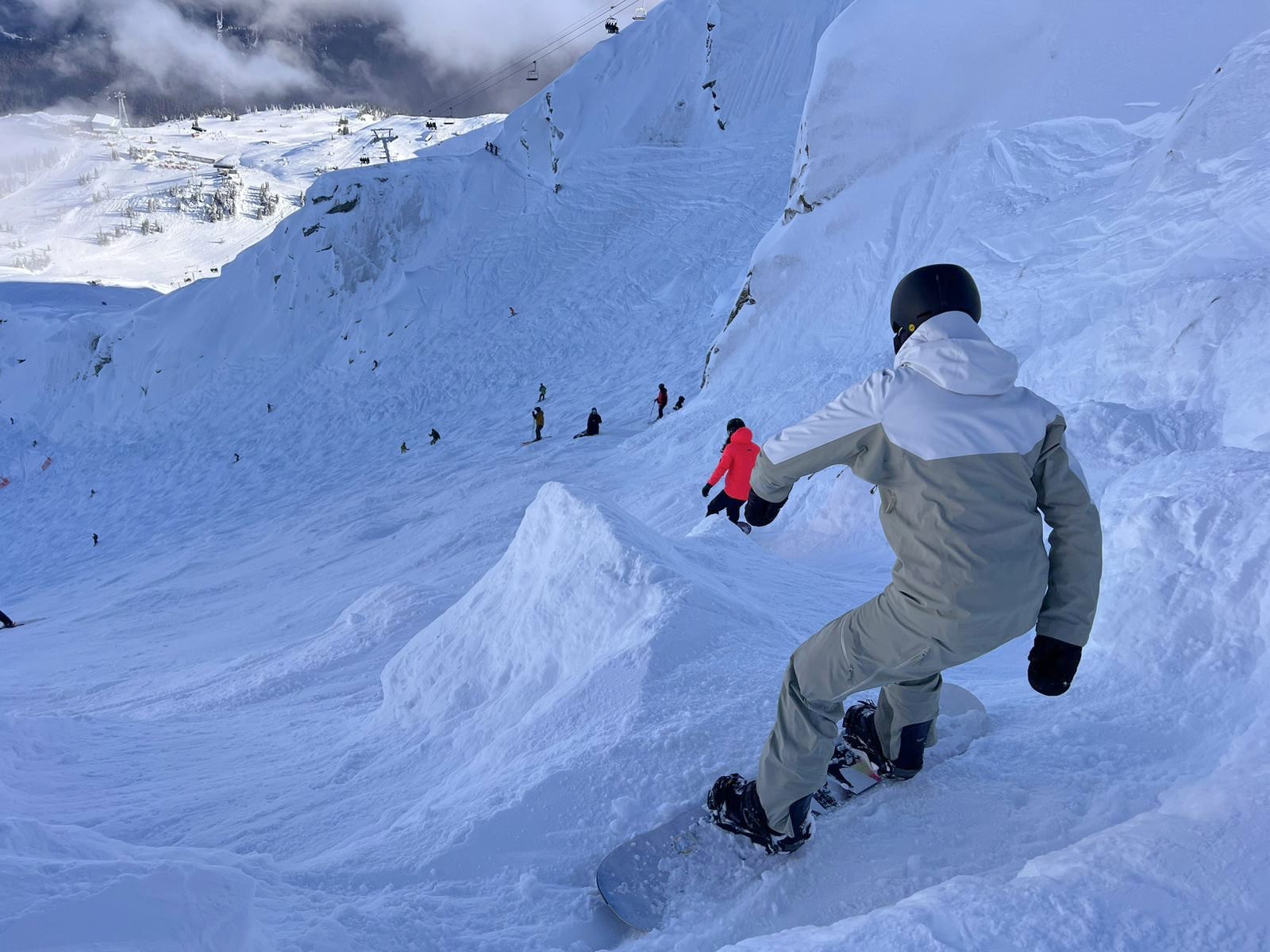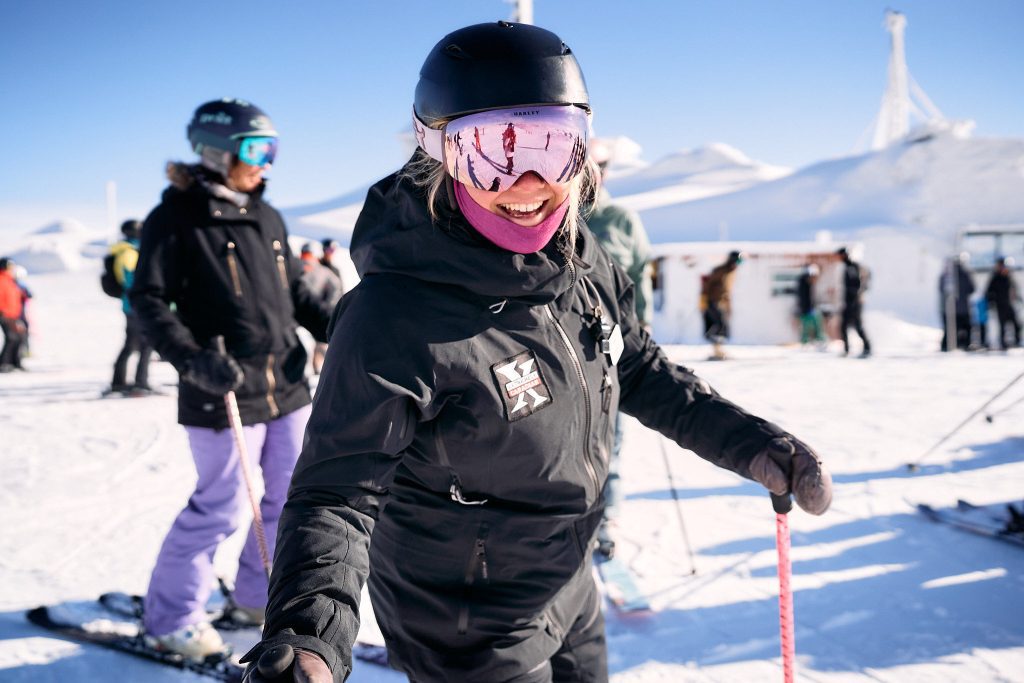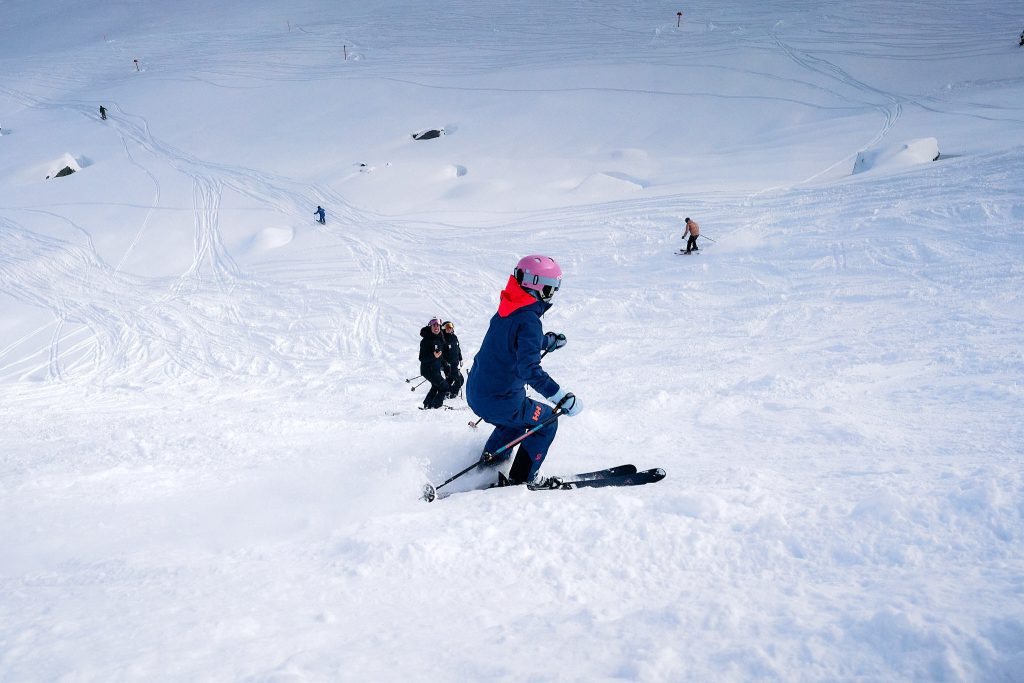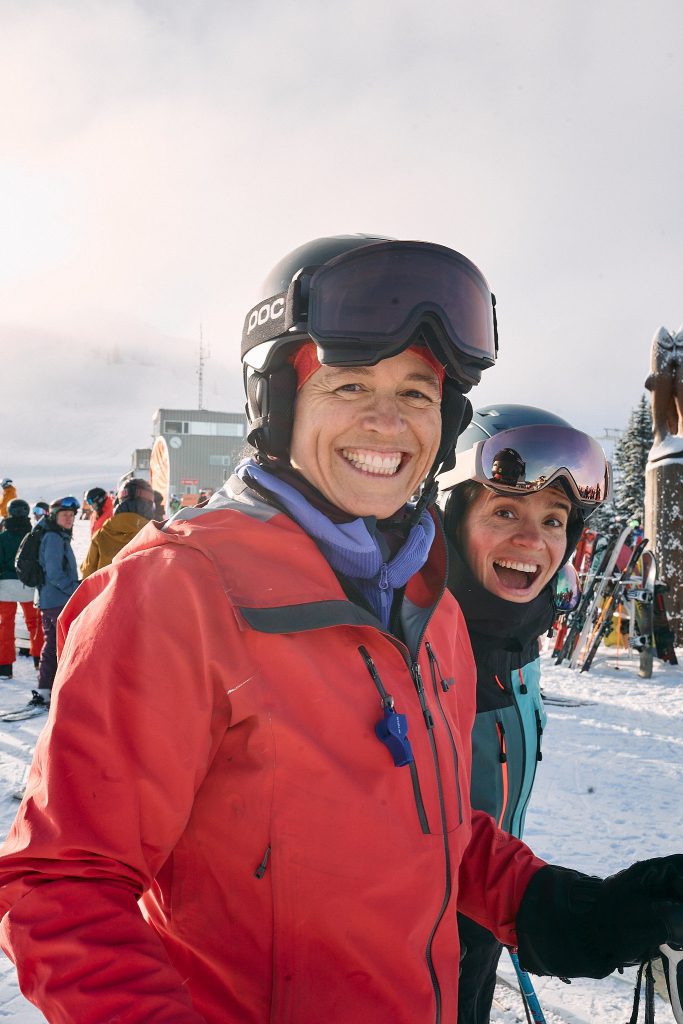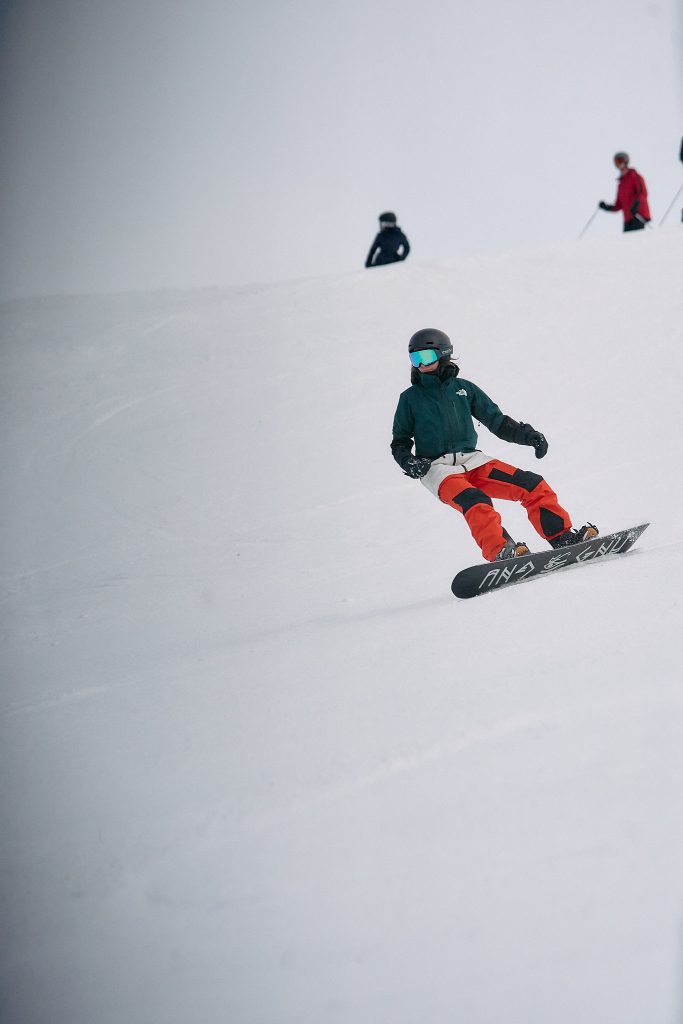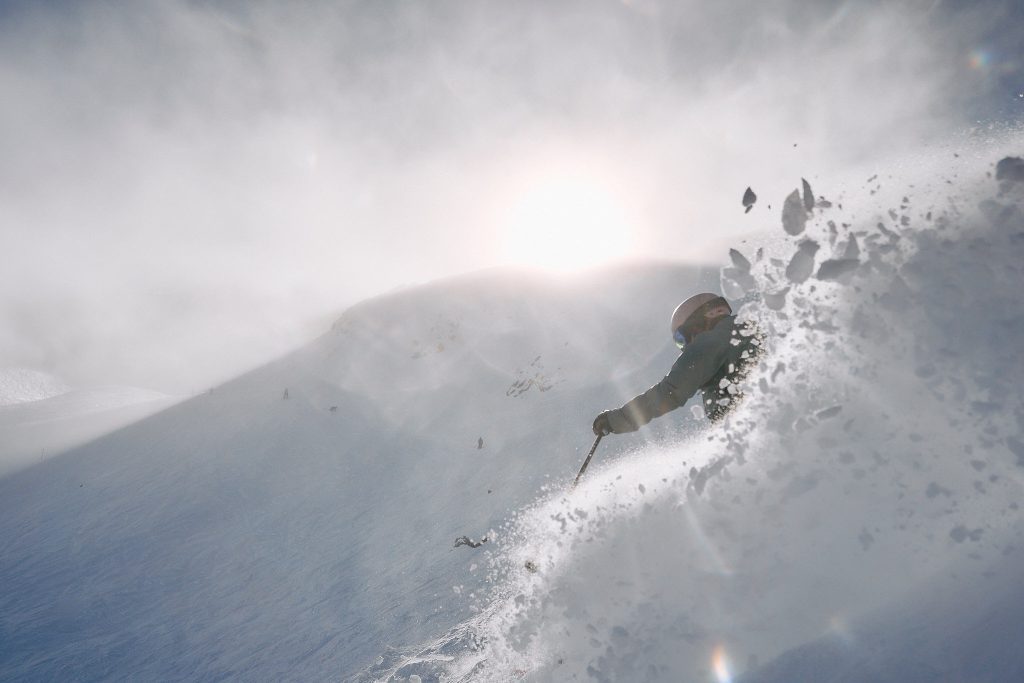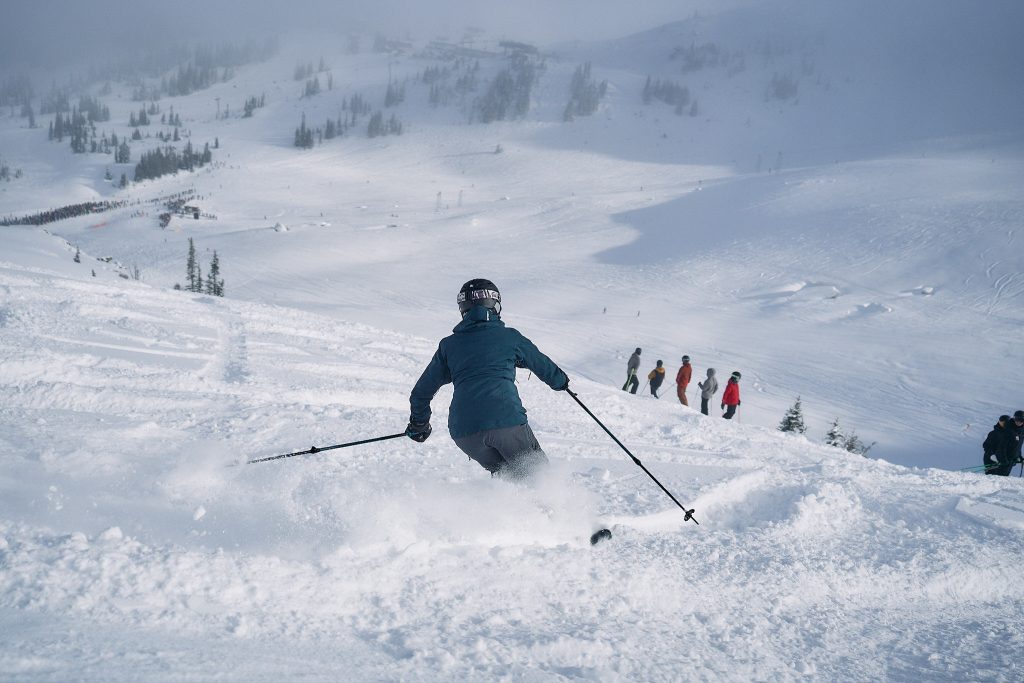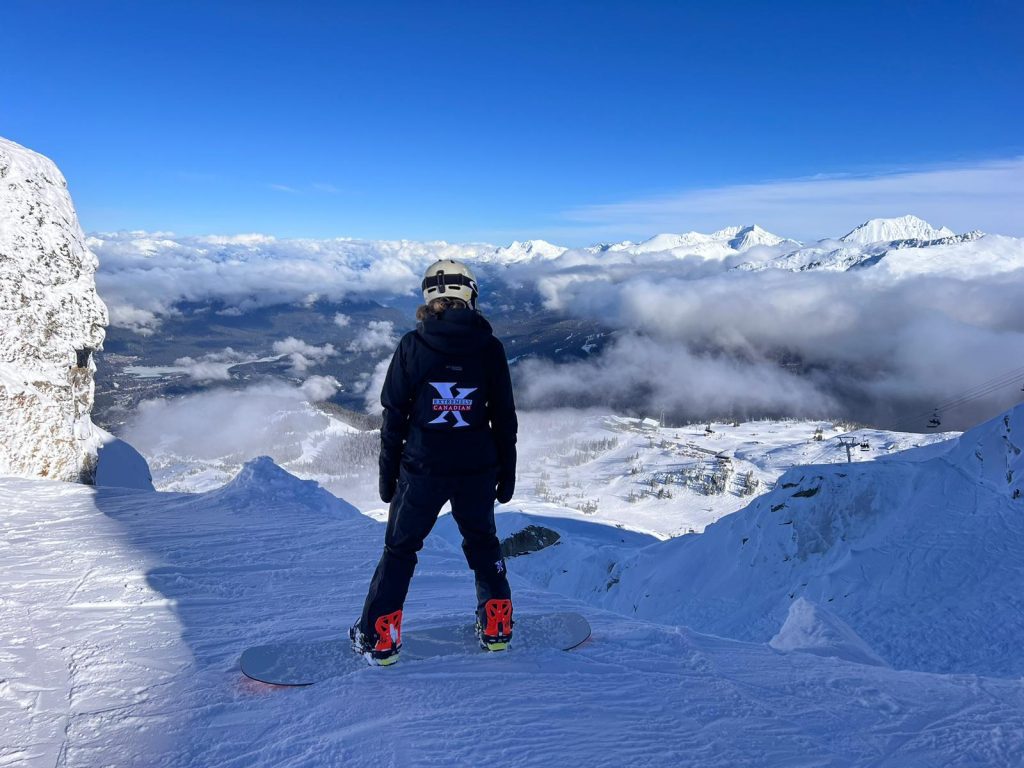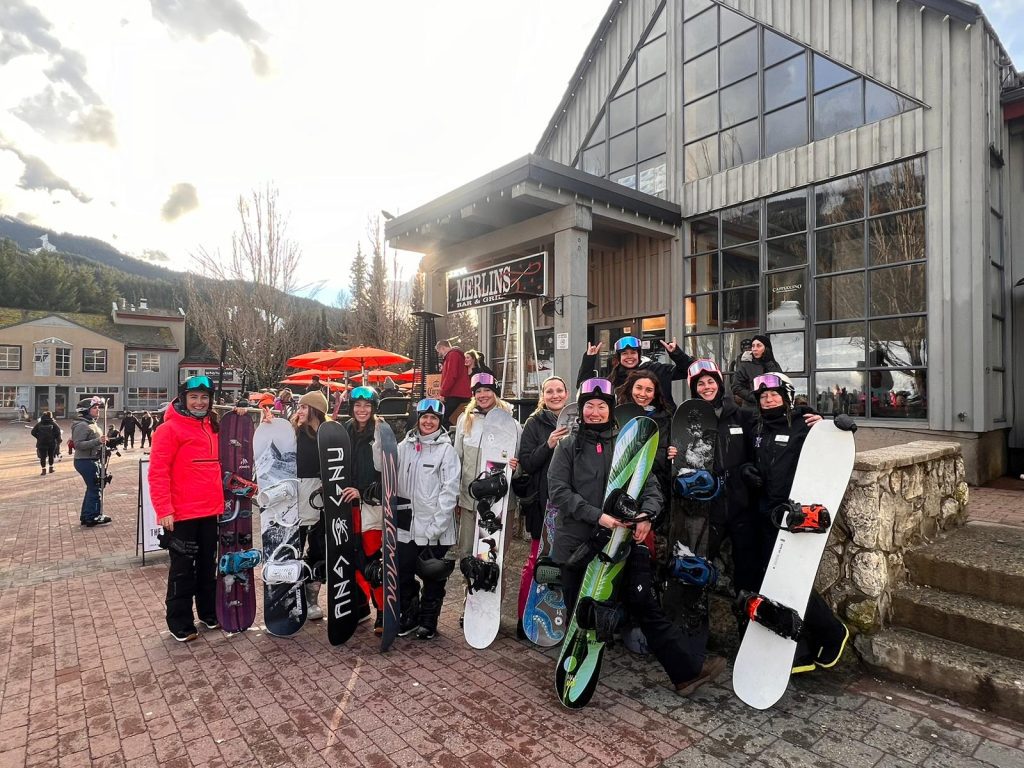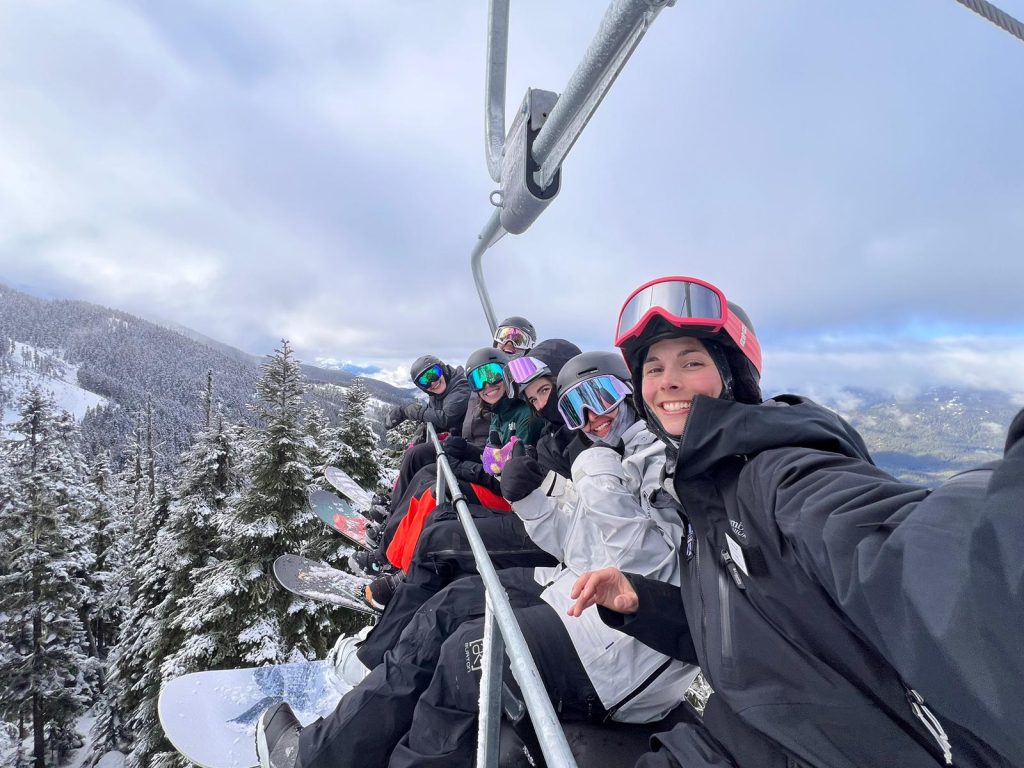It was a perfect morning at Whistler Blackcomb. Bluebird, 10cm of new snow overnight. I watched the first skiers and riders drop in to their lines from Peak Chair, spraying out powder in the sunshine. Whooping for joy as those in the lift line watched on, eager for their turn. Except I didn’t feel excited like usual.
I should have been stoked. But instead I wanted to throw up.
I hadn’t told anyone that this is where I had put a sudden and painful end to my season seven years ago. It was 2017 and I had been working as a snowboard instructor at Whistler Blackcomb.
Myself and a group were riding Peak Chair and I had taken a fall just after a narrow goat track, landing with a classic ‘scorpion’ maneuver where you fall forward and your board comes up behind you, like a scorpion tail. I’d kept riding but things felt off and my back started seizing up.
Nothing showed up on the X-ray but the physio said the injury was acting like a spinal fracture and my season was done. I returned to Australia with my tail between my legs, feeling defeated by my first and only Canadian winter.
Fast forward seven years and I was staring down that same terrain. In a “Steeps Clinic” no less, on a Rossignol We Rise day, a women’s clinic run by Extremely Canadian aimed at improving women’s freeride, off-piste and steep skiing or riding skills.
“Our goal is to encourage people to get out of their comfort zone, push their limits and enjoy being outside on snow. To redefine their boundaries” is the official blurb. Well we certainly were nudging up against my boundary – to never return to Peak chair ever again.
- Photo credit: Extremely Canadian We Rise women’s day
- Photo credit: Extremely Canadian We Rise women’s day
- Photo credit: Extremely Canadian We Rise women’s day
- Photo credit: Extremely Canadian We Rise women’s day
- Photo credit: Extremely Canadian We Rise women’s day
- Photo credit: Extremely Canadian We Rise women’s day
- Whistler Extremely Canadian steeps camp. Photo: Alex Parsons
- The boarders! Photo credit: Alex Parsons
- Boarders on We Rise with Extremely Canadian.
I was accompanied by seven other snowboarders and three coaches (another 50 or so skiers with their coaches also attended the Rossignol We Rise day). We shuffled to the front of the line, caught the chair and at the top I briefly forgot about my worries at the sight of the views.
Coach Sandy, a member of the Lil’wat Nation, pointed out the prominent peak of the Black Tusk standing 2,319 metres tall in the distance. She explained that to indigenous people, the mountain is known as q̓elqámtensa ti skenknápa. It means, the “Roost of the Thunderbird”.
We then spotted an avalanche dog and fawned over it, before gathering back together. How odd, I thought. There’s no rush here. I was used to strapping my back foot in as quickly as possible with the mentality of, “don’t get left behind”.
Coach Emilie explained the route down to where we’d have our first double black diamond drop in, and we cruised through some powder to the edge. The terrain rolled over steeply and jagged rocks protruded from cliffs on either side of the drop in. We couldn’t see the run over the edge and suddenly the nerves were back.
Emilie turned to the group. “Who is a bit nervous?” We all laughed. She then described the entry and what we might find. “Who would like to go first?” she said. Someone piped up behind me, “Does anyone mind if I go first?” I actually laughed out loud for a second, because it was so incredibly polite.
In other groups, no one would ask nicely – they’d just go and you’d try to fit in where you could and not be last. But here we were. Molly (who I would later learn was doing a PhD in thermodynamics related to backcountry touring) slid over the edge and Coach Terra watched and directed her. Then one at a time we took a breath and slid into the bowl – laughing and whooping as we went, all tension washed away as we realised we were fully capable in this terrain. The coaches could see it, even if sometimes we couldn’t.
For the rest of the day we cut lines down “Expert Only” terrain. The kind of couloirs, ridgelines and steep faces scattered with avalanche debris I normally wouldn’t take on alone. But in this environment I was supported in both body and mind.
Towards the end of the day I even volunteered to be one of the first to drop into a rather icy Saudan Couloir (also known as Couloir Extreme). It wasn’t the prettiest drop in of my life but I got it done and heard the girls clapping behind me. When I looked back up I thought, “Damn, that’s a technical route. Guess I really can snowboard.”
After that run I sat on the chair with Sandy and opened up to her about my injury. She said she knew what that felt like, after recently tearing her calf and taking a big fall in her film Slides on the Mountain .
The truth is, we’ve all had falls and injuries and scares on the mountain. If you’re a woman, chances are we’ve also had similar experiences being a minority on the snow. That’s part of the reason you might find an instant connection at an all-women’s event.
Whistler Blaclcomb was the place I first had anything to do with “women only” clinics. Seven years ago, before my injury, I did a women’s ski school training day and I was blown away that these existed and that enough women in the industry existed at all. It changed the way I snowboarded and thought about instructing as it didn’t focus on “riding like the boys” but rather celebrated the different and equal ways that women ride.
With technique and flow, the different ways we learn, different approaches to learning new things, and physical differences like the Q-angle of our hips. It was one of the few times in a training session I didn’t feel stressed or out of place. I took the learning from that day into the next 7 years of my own snowboard instructing and guiding.
I’m not typically someone who does women’s only events. I’ve run them, yes, but I don’t find myself in those situations as a client anymore. Participating in a women’s only day made me realise the value of them all over again. I just felt better. Less stressed, more seen. Like I had found my tribe. This feeling tells me: we need women’s only events.
Alex Parsons was a guest of Destination British Columbia, Tourism Whistler, Extremely Canadian and Destination Canada.
